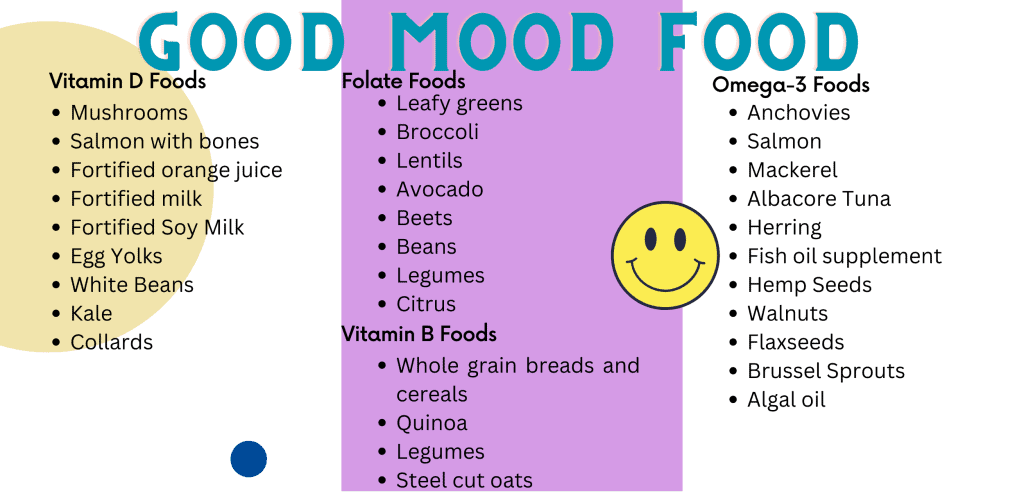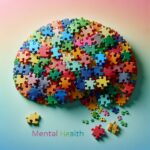Key Takeaways
- Moods and emotions influence our perception, decision-making, and social interactions.
- Emotions consist of three components: subjective experiences, physiological responses, and behavioral responses.
- Positive moods enhance attention to rewarding stimuli, while negative moods heighten awareness of threats.
- Understanding the intensity and nature of moods can improve emotional intelligence and decision-making.
- Mindfulness and mood tracking are effective strategies for enhancing emotional awareness and regulation.
Mood Science: How Emotions Shape Our Daily Lives
Have you ever wondered why sometimes you feel on top of the world, while other times, everything seems to go wrong? It’s not just about what happens around us; it’s about how we feel inside. Moods and emotions play a crucial role in shaping our daily experiences and interactions. They color our perception of the world, influence our decisions, and affect our relationships.
Understanding emotions is not just about knowing what you’re feeling; it’s about recognizing how these feelings influence your thoughts and actions. By becoming more aware of your emotional states, you can make better decisions and improve your interactions with others.

“Good Mood Food | Peace & Nutrition™” from peaceandnutrition.com and used with no modifications.
Defining Moods and Emotions
Emotions and moods are often used interchangeably, but they are not the same. Emotions are intense feelings triggered by specific events, while moods are more prolonged and less intense. For example, you might feel joy when you receive a gift (emotion), but you might feel generally happy throughout the day (mood).
Psychologists define a mood as a prolonged emotional state that can last for hours or even days. Moods are less specific than emotions and can be influenced by various factors, including environmental conditions, physical well-being, and even the weather.
The Impact of Mood on Behavior and Decision-Making
Our moods significantly impact how we perceive the world and make decisions. A positive mood can make us more optimistic and open to new experiences. It enhances our attention to rewarding stimuli, making us more likely to notice opportunities and positive aspects of our environment.
Conversely, a negative mood can make us more cautious and focused on potential threats. It can heighten our awareness of risks and challenges, which can be beneficial in some situations but may also lead to overly pessimistic decision-making. For a deeper understanding, explore the science behind moods.
Why Emotions and Moods Matter
Emotions and moods are more than just feelings; they are vital components of our mental health and well-being. They influence our thoughts, behaviors, and interactions with others. By understanding and managing our emotions, we can enhance our emotional intelligence, leading to better relationships and improved decision-making.
Emotional intelligence is the ability to recognize, understand, and manage our own emotions, as well as the emotions of others. It involves being aware of our emotional states and using this awareness to guide our thinking and behavior.

“Feeling your feelings – Midas PR” from midas-pr.com and used with no modifications.
Three Components of Emotions
Emotions are complex and consist of three main components: subjective experiences, physiological responses, and behavioral responses. Understanding these components can help us better manage our emotions and improve our emotional intelligence.
Subjective Experiences: Our Personal Feelings
Subjective experiences are the personal feelings and thoughts that accompany an emotion. They are the internal sensations that we experience when we feel happy, sad, angry, or any other emotion. These experiences are unique to each individual and are influenced by personal history, beliefs, and personality.
For example, two people might feel happy in different situations. One person might feel happy when spending time with family, while another might feel happy when achieving a personal goal. Understanding our subjective experiences helps us recognize what triggers our emotions and how we can manage them effectively.
Physiological Responses: Body’s Reaction
Emotions are not just mental experiences; they also have physical components. When we experience an emotion, our body reacts in various ways. These physiological responses can include changes in heart rate, breathing, and hormone levels.
For instance, when we feel anxious, our heart rate might increase, and we might start sweating. These physical responses are part of our body’s natural reaction to emotional stimuli and can provide valuable insights into our emotional states.
Positive vs. Negative Moods
Moods can be broadly categorized as positive or negative. Positive moods, such as happiness and contentment, often result in a more optimistic outlook on life. They encourage us to engage more with our surroundings and foster better social interactions. Positive moods can improve our problem-solving skills and increase our willingness to take on challenges.
On the other hand, negative moods, like sadness or anger, can lead to a more cautious approach. While they might seem undesirable, negative moods can be beneficial in certain contexts. They can make us more detail-oriented and critical, helping us to avoid potential pitfalls. Understanding the nature of your mood can guide you in making more balanced decisions.
Intensity Levels: Mild to Intense Moods
Moods vary not only in type but also in intensity. A mild mood might pass unnoticed, influencing our behavior subtly, while an intense mood can dominate our thoughts and actions. Recognizing the intensity of your mood is crucial. For example, a mild feeling of contentment might make you more pleasant in social settings, whereas intense happiness could lead to impulsive decisions.
Similarly, mild irritability might simply make you less patient, while intense anger can result in actions you might later regret. Being aware of the intensity of your mood helps in moderating your responses and maintaining control over your actions.
How Mood Influences Thought Patterns
Our moods significantly shape our thought patterns. A positive mood often leads to more creative and flexible thinking. It encourages us to explore new ideas and consider alternative perspectives. This can be particularly beneficial in problem-solving and innovation.
Conversely, a negative mood might narrow our focus, making us more analytical and detail-oriented. While this can be advantageous in situations that require critical thinking, it may also limit our ability to see the bigger picture. By understanding how your mood influences your thoughts, you can adapt your approach to different situations more effectively.

“Internal vs. External Reference [Part 1 …” from www.coachtrainingedu.com and used with no modifications.
External and Internal Factors Influencing Mood
Various factors, both external and internal, can influence our moods. Recognizing these influences allows us to manage our emotional states better and improve our overall well-being.
External factors include environmental conditions, social interactions, and life events. These can have a profound impact on how we feel. Internal factors, such as biological processes and personal habits, also play a significant role in shaping our moods. For a deeper understanding, you can explore the science behind moods and how they are influenced by these factors.
The Role of Environment and Situational Triggers
- Weather: Sunny days can boost mood, while gloomy weather might lead to feelings of sadness.
- Social Interactions: Positive interactions with friends and family can enhance mood, while conflicts can lead to negative emotions.
- Life Events: Major events, such as a promotion or a loss, can significantly impact mood.
Our environment and the situations we find ourselves in can have a direct impact on our mood. For example, a supportive work environment can lead to feelings of satisfaction and motivation, while a stressful setting might result in anxiety or frustration.
Being aware of these triggers can help us take proactive steps to manage our moods. For instance, if you know that crowded places make you anxious, you might choose to visit them during off-peak hours or prepare yourself mentally beforehand.
Besides that, creating a positive environment at home or work can enhance your mood and overall well-being. Simple changes, like adding plants to your workspace or playing calming music, can make a significant difference.
Biological Factors: Brain Chemistry and Genetics
Our brain chemistry and genetics also play a crucial role in determining our moods. Neurotransmitters, such as serotonin and dopamine, are chemicals in the brain that affect mood regulation. Imbalances in these chemicals can lead to mood disorders like depression or anxiety.
Genetic factors can influence how we respond to stress and our predisposition to certain mood disorders. While we cannot change our genetics, understanding their impact can help us seek appropriate interventions, such as therapy or medication, to manage our moods effectively.
Personal Well-Being: Sleep, Diet, and Exercise Impacts
Our lifestyle choices, including sleep, diet, and exercise, have a profound impact on our moods. Quality sleep is essential for mood regulation. Lack of sleep can lead to irritability and decreased emotional resilience.
A balanced diet, rich in nutrients, supports brain health and mood stability. Foods high in omega-3 fatty acids, for example, have been linked to improved mood and reduced symptoms of depression.
Regular exercise is another critical factor. Physical activity releases endorphins, which are chemicals in the brain that act as natural mood lifters. Incorporating regular exercise into your routine can help maintain a positive mood and reduce stress.
Strategies for Enhancing Emotional Awareness
Enhancing emotional awareness is key to managing our moods and improving our emotional intelligence. By becoming more attuned to our emotions, we can respond to situations more effectively and maintain better relationships.
Mindfulness Practices for Mood Regulation
Mindfulness is the practice of being present in the moment and observing your thoughts and feelings without judgment. It can be a powerful tool for mood regulation. By practicing mindfulness, you can become more aware of your emotional states and learn to respond rather than react to situations.
Simple mindfulness practices, such as deep breathing exercises or meditation, can help calm the mind and reduce stress. Taking a few minutes each day to practice mindfulness can lead to significant improvements in mood and emotional well-being.
“Mindfulness is a way of befriending ourselves and our experience.” – Jon Kabat-Zinn
Incorporating mindfulness into your daily routine can be as simple as taking a few moments to focus on your breath or engaging in mindful walking. Over time, these practices can help you develop greater emotional awareness and resilience.
The Benefits of Mood Tracking and Journaling
Keeping track of your moods through journaling can be a game-changer in understanding your emotional patterns. By recording how you feel at different times of the day or in various situations, you can identify triggers and trends that might not be obvious at first glance. This practice not only helps in recognizing patterns but also provides a space to express emotions constructively.
Start by jotting down your mood at different points during the day. Note any specific events that might have influenced your feelings. Over time, you’ll notice patterns emerge, which can guide you in making informed decisions about your emotional health. Journaling also allows for reflection, helping you to process and let go of negative emotions.
Developing Emotional Intelligence for Better Relationships
Emotional intelligence is crucial for building and maintaining healthy relationships. It involves understanding your emotions and those of others, leading to better communication and empathy. To enhance emotional intelligence, start by actively listening to others, paying attention to both verbal and non-verbal cues.
Practice empathy by putting yourself in someone else’s shoes. Consider their feelings and perspectives before responding. This approach fosters deeper connections and reduces misunderstandings. Additionally, being aware of your emotional responses and managing them effectively can prevent conflicts and strengthen your relationships.
When to Seek Professional Guidance
While self-awareness and personal strategies can significantly enhance emotional intelligence, there are times when professional guidance is necessary. If you find that your moods are consistently affecting your daily life, relationships, or work, it might be time to seek help.
Signs that you may need professional assistance include persistent feelings of sadness or anxiety, difficulty managing anger, or an inability to enjoy activities you once found pleasurable. A mental health professional can provide support, strategies, and, if needed, treatment to help you regain emotional balance.
Frequently Asked Questions
Understanding emotions can be complex, and it’s natural to have questions. Here are some frequently asked questions that might help clarify common concerns.
What is the difference between mood and emotion?
Emotions are short-lived and often intense responses to specific events, such as joy from receiving a gift. Moods, on the other hand, are more prolonged emotional states that can last for hours or days and are less tied to specific events. They can influence how we perceive and interact with the world around us.
How can I become more aware of my emotions?
Start by paying attention to your physical and emotional responses in different situations. Practice mindfulness and take note of your feelings without judgment. Journaling can also be an effective tool for reflecting on your emotional experiences and gaining insight into your emotional patterns.
What are common signs that my mood is affecting my decisions?
When your mood starts to cloud your judgment, you might notice impulsive decision-making, difficulty concentrating, or a tendency to overreact to situations. Being aware of these signs can help you pause and reconsider your choices, ensuring they align with your long-term goals and values.
Can tracking my mood help improve my emotional intelligence?
Yes, tracking your mood is an excellent way to enhance emotional intelligence. It increases self-awareness by helping you identify emotional triggers and patterns. This awareness allows you to manage your emotions better and respond to others more empathetically, improving your overall emotional intelligence.
When should someone consider professional help for mood issues?
If your mood consistently impacts your ability to function in daily life, it’s essential to seek professional help. Persistent sadness, anxiety, or mood swings that interfere with work, relationships, or personal well-being are indicators that professional support might be beneficial. A mental health professional can offer guidance, therapy, and, if necessary, medication to help you manage your emotions effectively.
Understanding and analyzing emotions can be complex, but it is essential for personal growth and interpersonal relationships. Emotions play a crucial role in how we think, behave, and interact with others. For a deeper dive into the science behind emotions, you can explore the Understanding Mood resource provided by the Dana Foundation. This resource offers insights into the mechanisms that drive our emotional responses and how they can be managed effectively.










Leave a Reply